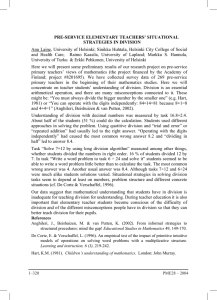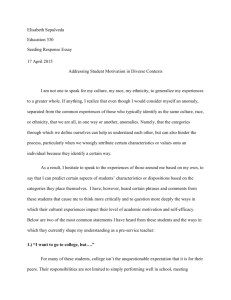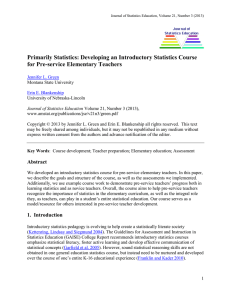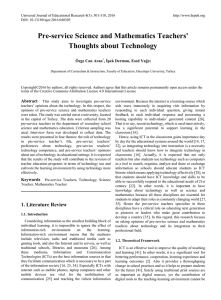HOW PRE-SERVICE MATHEMATICS TEACHERS UNDERSTAND PERCENTAGE PROBLEMS
advertisement
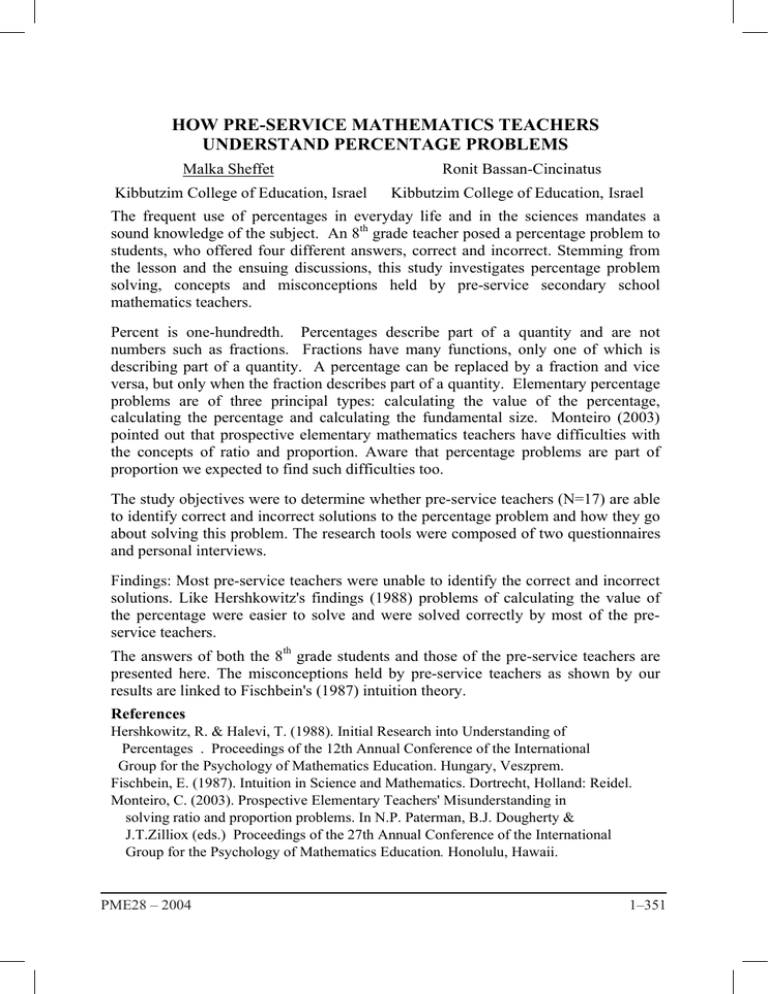
HOW PRE-SERVICE MATHEMATICS TEACHERS UNDERSTAND PERCENTAGE PROBLEMS Malka Sheffet Kibbutzim College of Education, Israel Ronit Bassan-Cincinatus Kibbutzim College of Education, Israel The frequent use of percentages in everyday life and in the sciences mandates a sound knowledge of the subject. An 8th grade teacher posed a percentage problem to students, who offered four different answers, correct and incorrect. Stemming from the lesson and the ensuing discussions, this study investigates percentage problem solving, concepts and misconceptions held by pre-service secondary school mathematics teachers. Percent is one-hundredth. Percentages describe part of a quantity and are not numbers such as fractions. Fractions have many functions, only one of which is describing part of a quantity. A percentage can be replaced by a fraction and vice versa, but only when the fraction describes part of a quantity. Elementary percentage problems are of three principal types: calculating the value of the percentage, calculating the percentage and calculating the fundamental size. Monteiro (2003) pointed out that prospective elementary mathematics teachers have difficulties with the concepts of ratio and proportion. Aware that percentage problems are part of proportion we expected to find such difficulties too. The study objectives were to determine whether pre-service teachers (N=17) are able to identify correct and incorrect solutions to the percentage problem and how they go about solving this problem. The research tools were composed of two questionnaires and personal interviews. Findings: Most pre-service teachers were unable to identify the correct and incorrect solutions. Like Hershkowitz's findings (1988) problems of calculating the value of the percentage were easier to solve and were solved correctly by most of the preservice teachers. The answers of both the 8th grade students and those of the pre-service teachers are presented here. The misconceptions held by pre-service teachers as shown by our results are linked to Fischbein's (1987) intuition theory. References Hershkowitz, R. & Halevi, T. (1988). Initial Research into Understanding of Percentages . Proceedings of the 12th Annual Conference of the International Group for the Psychology of Mathematics Education. Hungary, Veszprem. Fischbein, E. (1987). Intuition in Science and Mathematics. Dortrecht, Holland: Reidel. Monteiro, C. (2003). Prospective Elementary Teachers' Misunderstanding in solving ratio and proportion problems. In N.P. Paterman, B.J. Dougherty & J.T.Zilliox (eds.) Proceedings of the 27th Annual Conference of the International Group for the Psychology of Mathematics Education. Honolulu, Hawaii. PME28 – 2004 1–351
